Tell us about your approach to photography. How it all started? What are your memories of your first shots?
Sanne Kabalt (SK): I grew up in a town close to the sea. As a teenager I started taking photographs there. Often I cycled to the dunes and played with my camera, catching reflections and shadows, looking for new perspectives and compositions. My best friend joined me regularly and then I would use her as a model. Once I photographed her arm in the same direction the sea had flown over the sand. I still like that photograph.
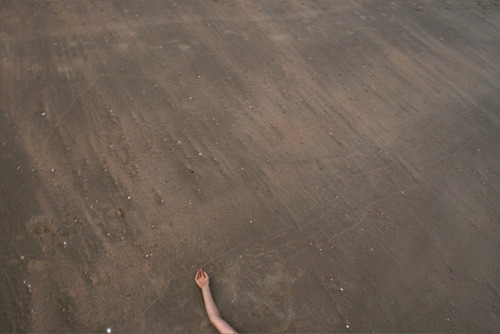
© Sanne Kabalt, Untitled, 2005
How did your research evolve with respect to those early days?
SK: In the beginning I was mainly getting to know the medium esthetically, training my eye and looking for beauty. In later stages these things (esthetics, a good eye, beauty) are still important, but they became natural and self-evident. Nowadays I do not take a photograph in order to take a beautiful photograph. I have other reasons that depend on the project I am working on. The photograph might be beautiful, but that is not my goal - at least not consciously.
Tell us about your educational path. What are your best memories of your studies? What was your relationship with photography at that time?
SK: I studied Photography at the Utrecht School of the Arts in the Netherlands. When I was selected I was told that I “might be a bit too much art” for that school. The emphasis was on documentary photography. We were trained to look and think carefully about images and stories and to articulate our reasons for our order, selection and presentation. What if you place this photograph next to that one? What if you take that photo with a large format camera? What if you take this excellent photo out of the series altogether?
I spent these four years experimenting with styles and techniques, having long discussions, baking cakes to accompany the long discussions, deleting the dust from scans and finding my fascinations. There were some periods when I barely saw daylight, due to darkroom and/or slide projector enthusiasm. I wouldn’t have missed these four years for the world.
There might have been some truth in what I was told at the very start, about me being ‘’too much art’’. Or maybe the school was not art enough? What I missed was a connection to other art forms. When I was working on some subject teachers would give me names of other photographers as references to look at. No one would tell me about a sculptor, director or performer who had worked on the very same subject. I think that’s a missed chance. Photography is part of the world of visual arts but is often treated as a little island all on its own.
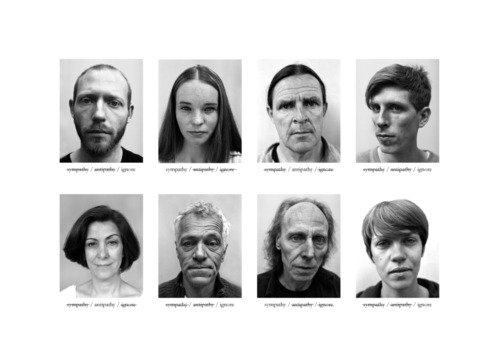
© Sanne Kabalt, from the series ‘Sympathy/Antipathy/Ignore’
What were the courses that you were passionate about and which have remained meaningful for you?
SK: There was a course that was very different from the rest of the curriculum, about presentation. The teacher, Mirjam de Zeeuw, challenged us to present something other than our actual photographic work. In her very own manner she drove us to beautiful presentations and performances. My father died during my time at the art school. Because this presentation course was so free and strange, it felt safe to do something with this loss in that context. I literally turned a room upside down and projected a video related to my father. I found a long narrow alleyway in town, filled it with photos of my father playing guitar, his songs and sheet music. My classmates were to walk trough the alley alone and pick a song. At the end of the alley I waited and sang it to them. It was very intimate and therapeutic.
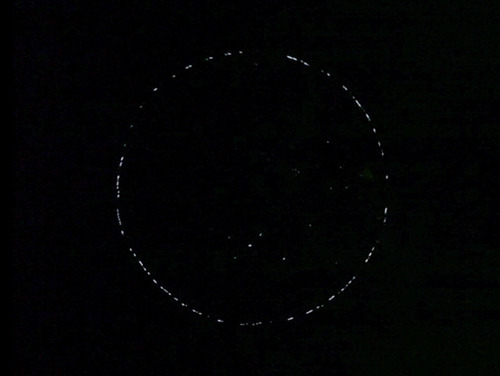
© Sanne Kabalt, 'Loom’,Video projection on salt on the floor. Music composed by Frank Wolff & Jannick Oeben Duration approximately 2 minutes (Loop.) Dimensions variable, 2012
Any professor or teacher that has allowed you to better understand your work?
SK: Many teachers helped me to understand my work, but the most profound conversation I have had during my studies was not with a teacher. In the beginning of the third year the school pushed us out into the great wide world to meet likeminded photographers. With a handcrafted portfolio under my arm I shyly visited people I greatly admired. One of them was Machiel Botman. He saw who I was as a person and what I made as an artist as one and the same thing. I think this is very rare. A line is often drawn. Nobody ever talks so deeply in the very same sentence about your relationships and your work, your childhood and your work, your sadness and your work. It was an intense experience. I felt like Machiel saw into the very depths of me. If you’ve seen his photobooks, this is hardly surprising.
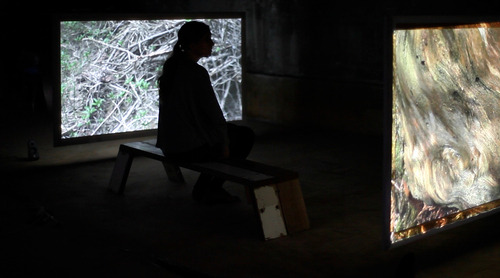
© Sanne Kabalt, 'Wolf hunt haunted’, Video installation including two beamers, two screens, sound and electronics. Sound composed by Frank Wolff & Jannick Oeben Video duration 8 minutes (Loop.) Sound continuous. 2013
I very much like the 'Dissimilitude’ graduation work. Could you tell a bit about this project?
SK: When looking at a portrait we instinctively draw conclusions about the person in the photograph. We assume we understand who this person is and what he or she is like. I once showed some portraits I’d made to friends and one of them pointed to one photo and said: «Sometimes I feel like this». It is fascinating to me that we think we see/know these things about the portrayed.
'Dissimilitude' is a slideshow consisting of 67 black and white portraits of two girls. I combine and compare their faces and emotions. Sometimes they are so different from themselves, as if they are a completely different person. Sometimes they are so similar to another, as if they feel the exact same feeling.
With this work I want to make you think about portrait photography. I know that as a photographer I influence how the portrayed person looks in a thousand small ways. By what I say and how I feel during the taking of the photo, which photos I choose, what I do and do not show, who I show it to, where and how. In Dissimilitude’s final presentation I used slide projectors that make loud noises. I like to think this is a tangible trace of me as the maker, saying: WHAM I present you this image WHAM and how about this one WHAM and the next one…
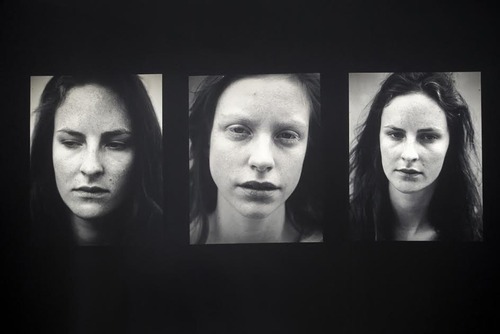
© Sanne Kabalt, 'Dissimilitude’, Slideshow containing 3 slide projectors, 67 black and white slides mounted between glass, projected in a dark space, 85 cm x 105 cm each. Duration approximately 4 minutes (loop), 2011.
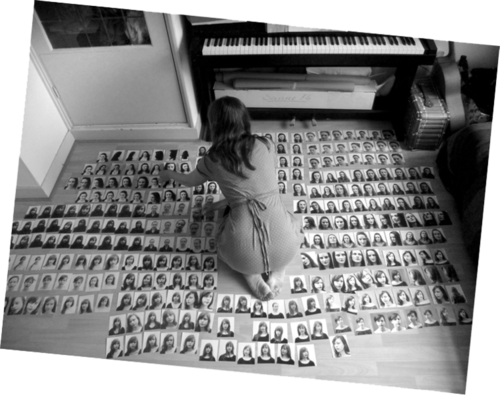
© Sanne Kabalt, 'Dissimilitude’ selection process
Is there any contemporary artist or photographer, even if young and emerging, that influenced you in some way?
SK: During my studies I have done an internship with Anouk Kruithof. She is Dutch, but she was living in Berlin back then and is based in New York today. She is an extremely hard worker with a very strong drive. Seeing Anouk work from day to day with such passion and perseverance and becoming part of this strong workflow for a while influenced me a lot. I can still hear Anouk’s voice in my head sometimes, saying: «Nothing is too hard or too strange or too much work: Do it! Go for it!»
About your work now. How would you describe your personal research in general?
SK: I play with what is seen and what is felt. Though I use photography - a visual medium – my work is about what you cannot see. I research aspects of human psychology such as memory, sanity and empathy. I want to give the invisible a visual form.
I approach each project as a fresh start. For each project anew I make my choices depending on what I want to convey: Color or black and white? Photography or video? A projection, a book, printed images on the wall or something else?
Another aspect that I am always researching is openness, a way to challenge each viewer to see my work in their own way. I believe a work is not finished until the viewer relates to it. I want the viewer, his position in the space and his own associations to become part of the work.
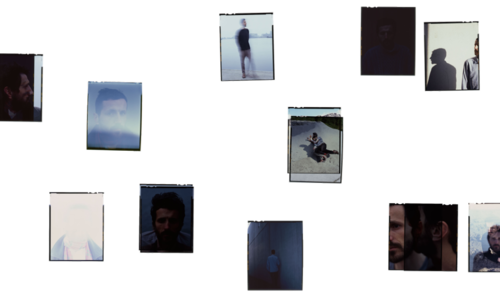
© Sanne Kabalt, 'Recollection’, work in progress, 2014
For example, I am currently working on a project called 'Recollection’. It is about how you remember some one who is no longer there. It is a challenge to visualize this theme and perhaps even impossible. I photograph a man on 4x5 inch slides. More often than not he is unclear, under- or overexposed, or changed. Though sometimes you can see him clearly. Like in the mind. I have exhibited a first photograph from 'Recollection’ as a large print on duraclear pasted on glass in a standing steel frame in the space. You can see through it, you can walk around it. You see only a suggestion of a person. Some people are frustrated because they want to see more. Others complete the person in their minds.
In 'Recollection’ you use these words: «I use photography, the medium that is most used to save memories, to visualize how they fade». Do you think that photography today is related to the need to feel present someway?
SK: I believe we photograph people, places and moments to save them. Long ago we saved precious daguerreotypes of our family, then glossy printed photos pasted in albums and now tons of snapshots in phones, hard drives and clouds. The physical form is different, the quantity is different, yet the power of photography is the same. We have always wanted to keep a good moment close to us long after the moment has passed. We still do.
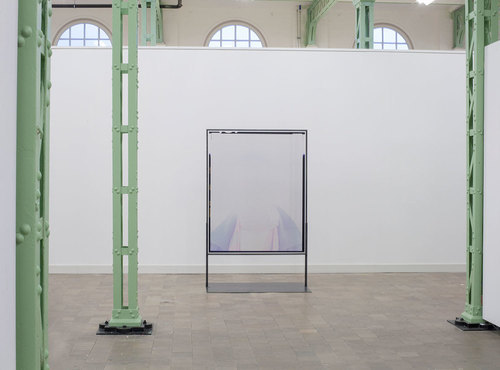
© Sanne Kabalt, installation view 'Recollection’
Tell us about your project 'Some Say’ and of your Nes artist residency in Iceland?
SK: Next to my own work as a photographer I have been working with children and art for the past few years. I build art installations outside with children and see them as real artists with their very own original ideas. I have always treated these two aspects of my practice as two separate things: Photography on the one hand, children’s art programmes on the other hand. Then there came this idea to combine the two into a children’s book with photography.
I went to Iceland for its landscape. There is a residency in the North called Nes where I worked for two months in the company of ten other artists. Nes is situated between the sea and the mountains. Never before or after have I felt so focused. Every day (except for some cases of strong snow, wind or rain) I went out, walked and photographed. I soon saw wolves in the snow, dragons in the rocks, witches in the ice and trolls in the seaweed. They are there, if you know how to look for them. Some Say, the book I made, is a combination of text, black and white photographs and drawings. It is an ode to the landscape and an ode to the imagination.
The first chapter goes like this:
Some say a rock has no feelings
Some say mountains can not move
Some say snow can not see
But I don’t believe them.
The book is unconventional, large and uses different kinds of paper. I am currently working on getting it printed and published.

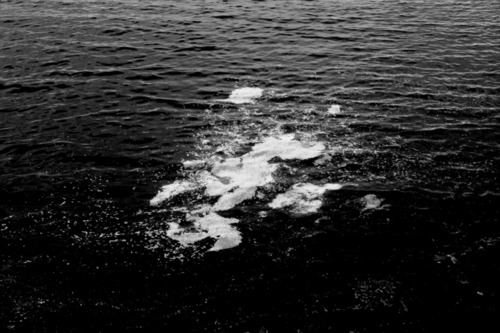

© Sanne Kabalt from the series 'Some Say’
Three books of photography or not about photography that you recommend?
SK: 'É' by Masao Yamamoto
This book is large while the photos are small. The effect is magical.
Yamamoto’s own words: «If I take small photos, it’s because I want to make them into the matter of memories. And it’s for this reason that I think the best format is one that is held in the hollow of the hand. If we can hold the photo in our hand, we can hold a memory in our hand».
'Kaddish' by Christian Boltanski
This monumental book holds thousands of images from divergent sources that together tell a story about Holocaust. Boltanski: «I always say that I am a big liar, but I lie because reality is so complex».
'Letters to a young poet' by Rainer Maria Rilke
This is not a photography book, but it has been vital for me.
Some words from this book that I often re-read: «Being an artist means: not numbering and counting, but ripening like a tree, which doesn’t force its sap, and stands confidently in the storms of spring, not afraid that afterward summer may not come. It does come».
Is there any show you’ve seen recently that you find inspiring?
SK: Museum Dr Ghuislain in Ghent is a former mental hospital converted into a museum about psychiatry. I experienced some of my strongest surges of inspiration here. I will bring them another visit later this week to see the current exhibition about melancholia and depression.
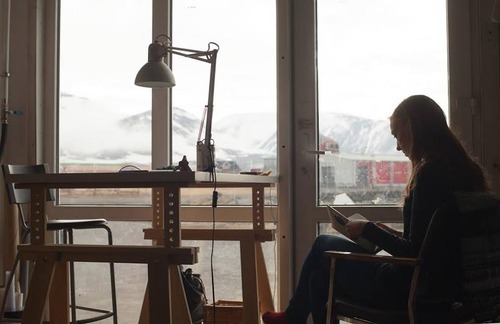
© Sanne Kabalt working in Iceland
Projects that you are working on and plans for the future?
SK: I am looking for a publisher for 'Some Say’. I am investigating the presentation of photos from 'Some Say’ as silkscreens on glass, together with a glass artist. With a curator I am working on a solo exhibition of my work in Amsterdam. There are some group exhibitions coming up in de Veluwe (NL), Den Bosch (NL) and Bremen (DE). I am struggling to find the best presentation for more 'Recollection’ works. I have been selected for two residencies in 2015: Atelier Austmarka in Norway and Pompgemaal Den Helder in the Netherlands. For Vrij Nederland, a Dutch magazine, I will make new work about the expected return of the wolf in The Netherlands. I am researching and starting a new project on empathy.
---
LINKS
Sanne Kabalt
The Netherlands
share this page